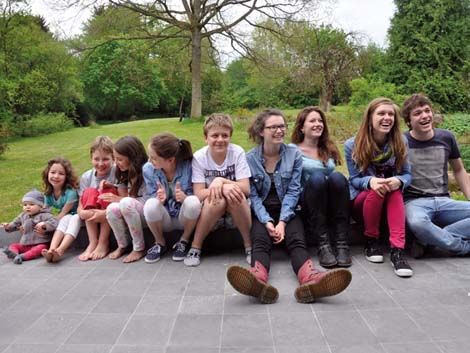New Eurostat publication introduces fresh data on education in Europe
Published:
'Being young in Europe today', a recent Eurostat publication, presents some new information on children and young people in the European Union. Its main statistical findings on education take a look at childcare attendance, participation in education, language skills, and quality of childcare and school life.
According to the publication, early childhood education and care can increase the wellbeing of children, advance their rights and ensure a fair start in life. One of the EU's goals is to make childcare facilities more accessible. In 2013, 27 % of children up to 3 years attended formal childcare in the EU-28. Participation in early childhood education is increasing steadily although in the Czech Republic, Slovakia and Poland the percentages were close to zero. Several countries have recently lowered their school starting ages and others are making pre-school attendance compulsory. All in all, the enrolment rates in primary and secondary education in most EU Member States were very high but there are still differences between the countries, especially in older age groups. According to the statistics, from the 92 million young people aged 15–29 living in the EU-28 in 2012, approximately 41 million were enrolled in education. Denmark and Finland were with the highest shares.
The publication states that 'the ability to speak foreign languages promotes the intercultural dialogue in Europe, improves employability and facilitates the free movement of workers across the EU'. According to the research, learning foreign languages at an early age fosters also the comprehension, expression, communication and problem-solving skills. In 2012, about 65 % of pupils in lower secondary education were learning two or more foreign languages in the EU-28. However, there is room for improvement in reading, mathematical and science skills according to the 2012 PISA survey. One of the most worrying remarks of the publication is that many young people leave the education system prematurely before gaining necessary skills for a successful integration in the labour market. At EU level, about 12 % of young people aged 18–24 were early school leavers. The most alarming situation is in Spain, Malta and Portugal. On average, young men leave school more often than young women. However, the situation is improving especially for women. More positive is that over one third of the population aged 30–34 had completed tertiary education in 2013. Nevertheless, there is room for improvement in student mobility. 250 000 EU students participated in the Erasmus programme in 2012/13 but this represents only less than 1 % of all EU students enrolled in tertiary education.
Eurostat's publication also provides fresh statistics about the staff-to-child ratios and class size in the EU-28. It underlines that high-quality early education and childcare for young children improves their health and promotes their development and learning. According to the publication, the average total expenditure for the pre-primary, primary and secondary education in the EU-28 was 4 % of GDP in 2011, with Malta and Denmark recording the highest rates, between 6 and 7 % of their GDP.
'Being young in Europe today' is available on Eurostat's website and within its online databases.